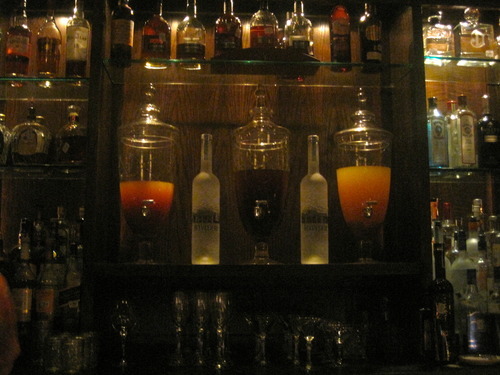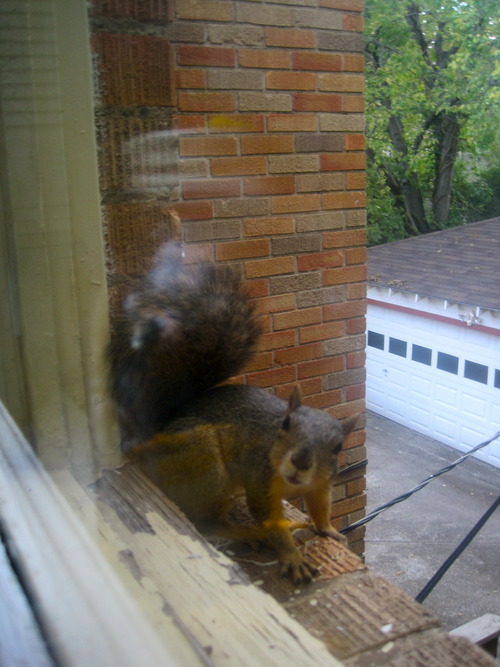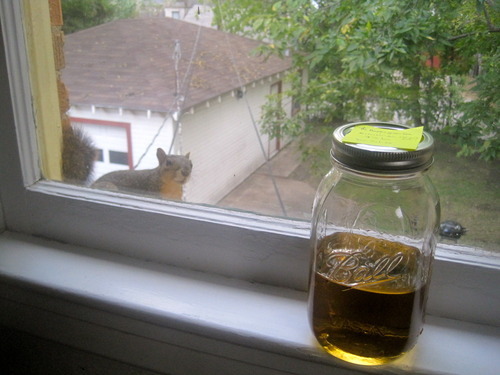The DFW cocktail scene has come a long way in the last two years, and as many a bartender knows, I’ve been no stranger to it. Restaurants now launch with bar programs no longer a second thought, the qualities of ice and citrus oils are strongly considered, and drinkers once keen on vodka-and-Red-Bull are growing more adventurous palates.
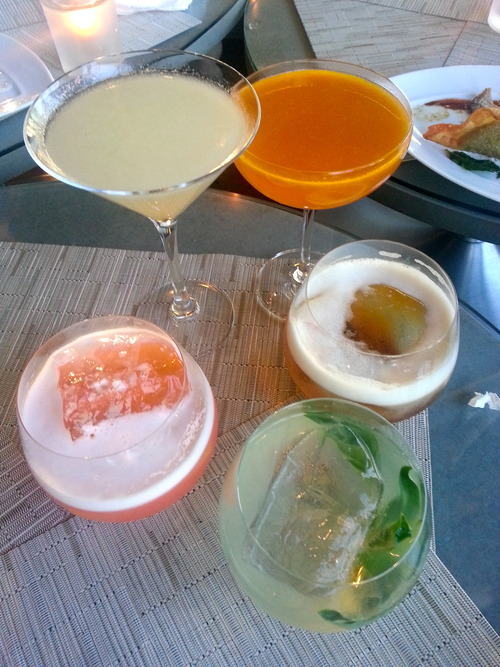
Some of the local drinks unveiled in 2012, these ones at Dallas’ Five Sixty. At middle left, Rolling Fog Over Mount Fuji; at middle right, Locked and Loaded.
Our craft cocktail architects have, in the last year, designed menus built on the shoulders of the past – reintroducing old classics, embellishing and remodeling, thinking up creations of their own. Luckily, I have taken it upon myself to sample many of these libations on behalf of the greater good. I have, as they say, taken one for the team.
I can’t claim to have sampled every drink out there. I’m just one man, for god’s sakes. (Thanks to all who sacrificed themselves to join me for the effort.) And I have my own tastes and habitats: In general, my spirits of choice are gin, whiskey, tequila, rum, gasoline and vodka, in that order. Ha ha, vodka – I kid you, I kid you.
But as we say Peace Out to 2012, I leave you with my top 10 favorite local discoveries of the past year. Ah, what the heck: In the spirit of the annum, let’s just make it 12.
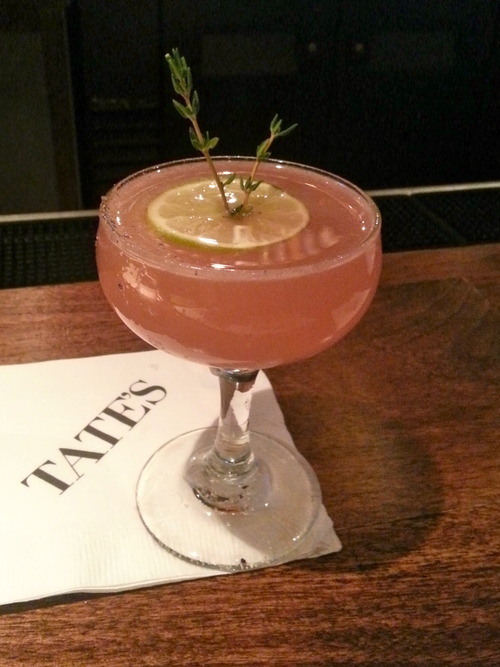
12. MEXICALI BLUES, Tate’s, Dallas (J.W. Tate)
Blending the glamour of aged tequila and house-made grenadine with the smokiness of mezcal, this is Salma Hayek in a coupe, bold and feminine. The borderland babe, named for a Grateful Dead song, is garnished with a palm-tree V of thyme planted in a floating lime-slice island, with a muddle of pepper upping the Baja heat.
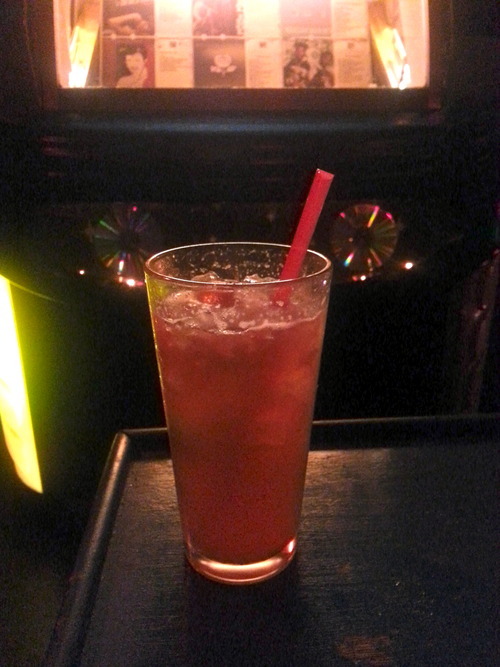
11. STRIPPER SWEAT – Cosmo’s Bar & Lounge, Dallas (Jackson Tran)
“Somebody asked me to make them a drink called Stripper Sweat. I think they had just come from a strip club,” says Tran, adept with flavor even as he churns out the shots and mixed drinks usually favored by the crowd at this Lakewood dive-bar gem. Partial to pairing vodka with the elderflower sweet of St. Germain, he gave complexity to this summery play on vodka-cranberry by mixing vanilla vodka with cranberry, St. Germain and the earthy licorice punch of Fernet. Shaken with an orange wedge, the pulpy, apricot-like mixture is poured over ice, frothy as a raspberry fizz.
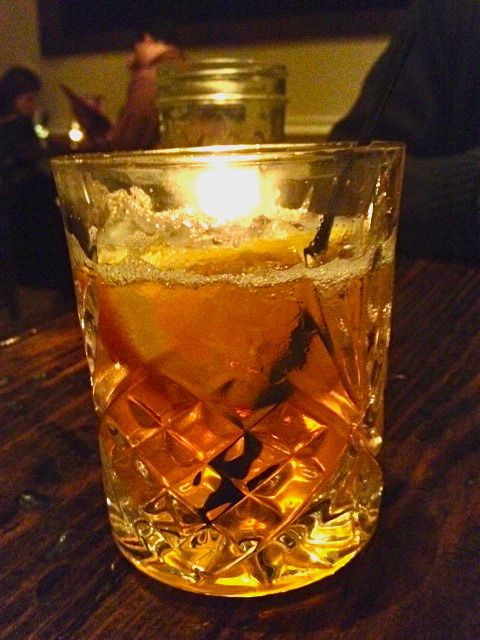
10. COLONEL SANDERS – Sissy’s Southern Kitchen, Dallas (Chase Streitz)
When Streitz, the beverage director at Sissy’s, was asked to design happy-hour drinks around the Henderson Avenue restaurant’s most popular spirits, he spun simple gold from Makers 46, honeying it up with Benedictine and splash of orange bitters over crushed ice. The drink’s initially aggression softens as the ice melts and muddles the accompanying orange slice, a pleasant pre- or post-dinner relaxer.
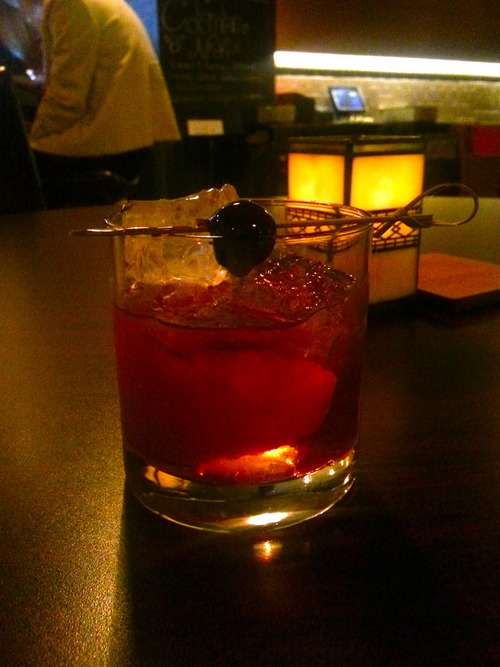
9. THE PEOPLE’S OLD FASHIONED – The People’s Last Stand, Dallas (Omar Yeefoon)
Though Yeefoon no longer pours at this Mockingbird Station bar, he left his mark on the place with this luscious take on the classic whiskey cocktail that couples maple syrup with Rittenhouse rye along with a touch of Angostura bitters and flame-drawn orange oils. The result: A strong whiskey handshake with a rush of almost tamarind-y sweetness.
8. ROLLING FOG OVER MOUNT FUJI, Five Sixty, Dallas (Lee Hefter)
This gorgeous and aptly named drink at Wolfgang Puck’s Asian-themed restaurant atop Reunion Tower also has depth – and properly made, the illusion of height. Japanese Hibiki 12 whiskey is shaken with Aperol, lemon, simple syrup and egg white, then poured into a small fishbowl of a glass. A mountainous ice slab juts out from the foamy egg-white surface, towering over the pink-hued landscape beneath and evoking the drink’s name. It has the taste and feel of sherbet, with an herbal Aperol finish.
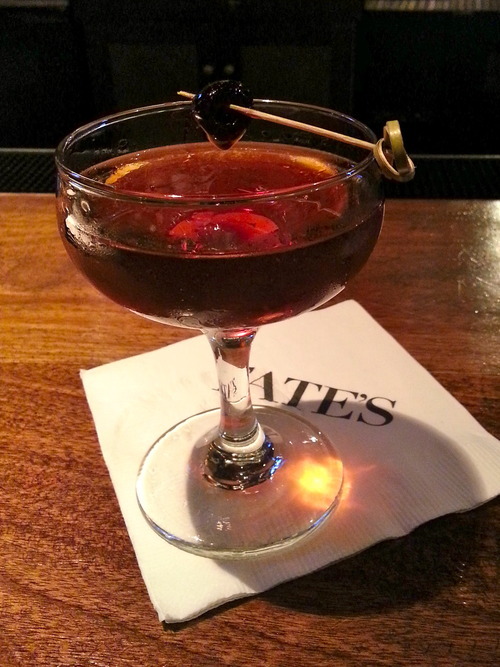
7. FIG MANHATTAN, Tate’s, Dallas (J.W. Tate)
This classic re-do land-rushes the prairie of your tongue with a bracing yet savory sweetness, the house-made fig syrup ably enhancing the Uptown bar’s orangey dark brown blend of Rittenhouse 100 rye, Cocchi D’Torino vermouth and Angostura bitters. It’s rich, not cloying, with a fig essence that elevates rather than just flavors this classic.
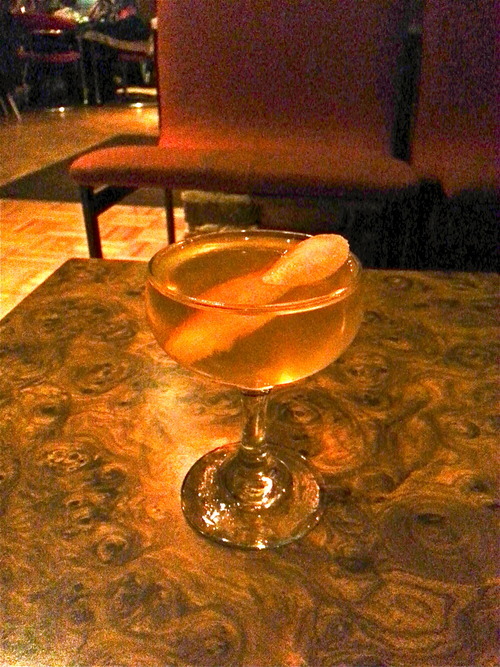
6. TINY’S FAREWELL, The Cedars Social, Dallas (Mike Steele)
Basically, Steele wanted to make a stirred tiki drink, one without the citrus juice that calls for shaking or the mounds of crushed ice that typically characterize these Caribbean-styled cocktails. He produced this blend of Cana Brava rum, Dolin dry vermouth, Domaine de Canton ginger liqueur, Kronan Swedish punsch, pineapple syrup and tiki bitters. A diaphanous lemony yellow, it’s honey-sweet with a fruity frontal assault and minty finish underscored by the warm essence of rum. The coup de grace is a swath of grapefruit ignited to draw out the oils and citrusy aroma. The story behind the name? “I always wanted to have a tiki bar,” Steele says. “I figured I’d have this really huge guy behind the bar named Tiny with really big arms, crushing ice. But when I made this drink, it was like, `Tiny, we don’t need you anymore.’ “
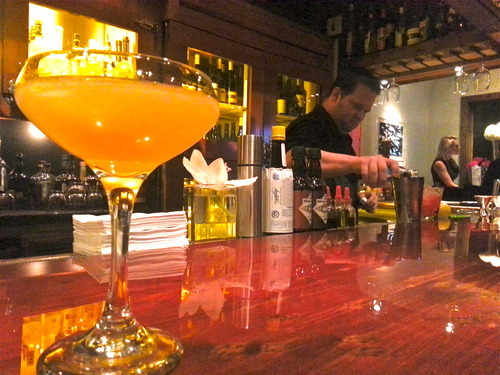
5. EMERSON, Hibiscus, Dallas (Grant Parker)
OK, nothing fancy here – just Parker’s take on a little-known classic that deserves wider recognition. The traditional Emerson is gin, sweet vermouth, maraschino liqueur and lime. Parker, the low-key force behind this Henderson Avenue restaurant’s bar, subs the sweeter and less botanical Old Tom gin and uses the spicy, herbaceous Carpano Antica as his vermouth. The result is a drink that starts fruity (especially cherry), but then U-turns with a dazzling chocolate-and-spice finish. “During the cold season, the Antica gives it a nice cinnamon flavor,” Parker says. “And when the weather turns hot, it’s a nice aperitif.”
4. LOCKED AND LOADED, Five Sixty, Dallas (Lee Hefter)
“That reminds me of breakfast, man,” says Five Sixty bartender Casey Griggs of Locked And Loaded. “That reminds me of some pancakes.” This drink created by Los Angeles-based Lee Hefter, Wolfgang Puck’s right-hand chef, is a buffet of bourbon, maple syrup, Carpano Antica sweet vermouth, lemon juice, egg white, rhubarb bitters and a sly rinse of Laphroig. Its hue is somewhere between butterscotch and Chimay Triple, and the bourbon is purposely understated, with a creamy finish marked by rhubarb candy sweetness.
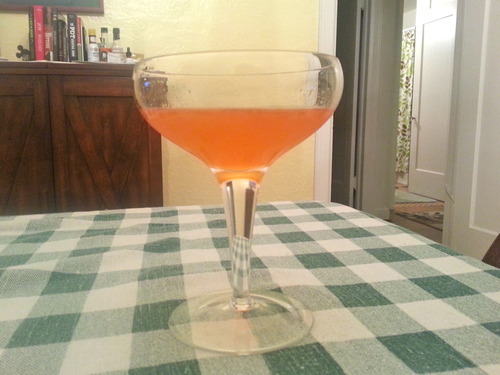
3. LINNEO’S REMEDY (Ian Reilly)
One evening when Reilly was still working at The People’s Last Stand, I asked him to concoct a drink to feed my growing fascination with mezcal. At the time, he, too, was toying with mezcal and employing his philosophy of temperance – that is, avoiding the urge to compound the agave-based spirit’s smoky Latin flavor with heat and rather using it as a player in an equal, four-part structure a la the classic Last Word. This is what he came up with: a balance of mezcal, Aperol, ginger liqueur and lime. The result is a delicious sweet-and-sour mix caught up in an undercurrent of peaty mezcal. Reilly – since relocated to just-opened Bowl and Barrel – now opts for saffron-spiced Strega over orangey Aperol, and the name he chose recalls Spain’s medicinal use of bitters as well as Swedish naturalist (and agave’s identifier) Carl Linnaeus – or Carlos Linneo, as he would have been known in Spanish. “I guess all of those, the idea of soothing and balance, combined into Linneo’s Remedy,” Reilly says.
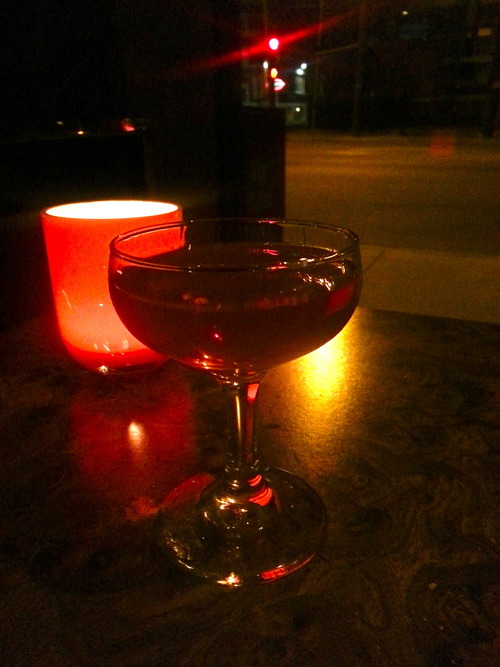
2. SECRETS AND LIES, The Cedars Social, Dallas (Mike Steele)
This off-the-menu treasure, inspired by a drink Steele once served in Denver, takes premium whiskey, enhances it with port and Strega and adds strong hints of Carpano Antica, vanilla syrup and a cardamom tincture. “I think cardamom and vanilla go really well together, and it’s a good, rich flavor for the fall,” he says. “Plus it goes really well with whiskey.” Every ingredient comes through, a beautiful balance of bite, herbs and holiday warmth. “One time, somebody asked me what was in it,” says the affable Steele from behind the bar of this pioneering spot south of downtown. “I said, `Secrets and lies, man, secrets and lies. And it just went from there.”
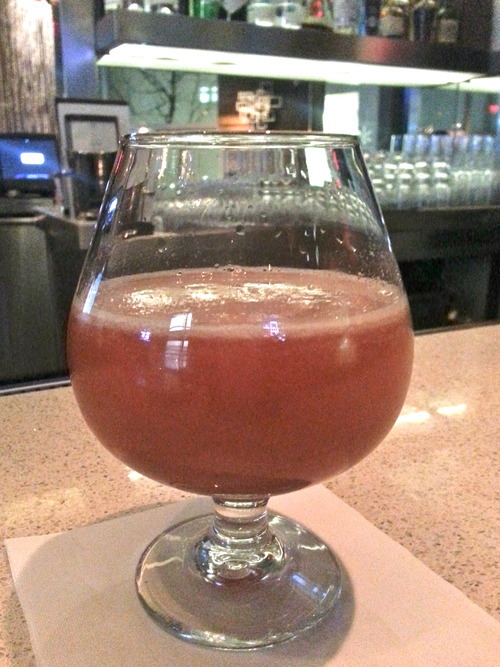
1. FALL INTO A GLASS, Private/Social, Dallas (Rocco Milano)
It’s really not fair when Hum is in the game, because anyone who knows me knows that I adore this liqueur dominated by flavors of ginger, cardamom and clove. It’s a feisty pit bull of an ingredient, but Milano – who introduced me to Hum about a year ago – has a knack for grabbing the leash and making it shine. The gin-hefeweizen-lemon Shandy that he’d added to the summer menu at Uptown’s Private/Social, a twist on the classic French 75, was so popular that he didn’t want to part ways with it in the fall; Hum seemed a natural autumn boost for this cleverly named drink. What you get is a mix of citrus and spritz with a frothy sheen of beer, the finish a wave of autumnal Hum. “It’s amazing how different .75 oz of Hum can make a cocktail taste,” he says. “When I presented the drink to the staff during training, everyone said the exact same thing: You nailed the flavors of fall.”
Want to make it yourself? Here’s the recipe.
FALL INTO A GLASS
2 oz light-bodied gin (such as Citadelle)
1 oz lemon juice
1½ oz simple syrup
¾ oz Hum liqueur
Combine all ingredients, shake and strain into a snifter. Top with 2-3 oz wheat beer (such as McKinney-based Franconia).
— Marc Ramirez 1/9/13
